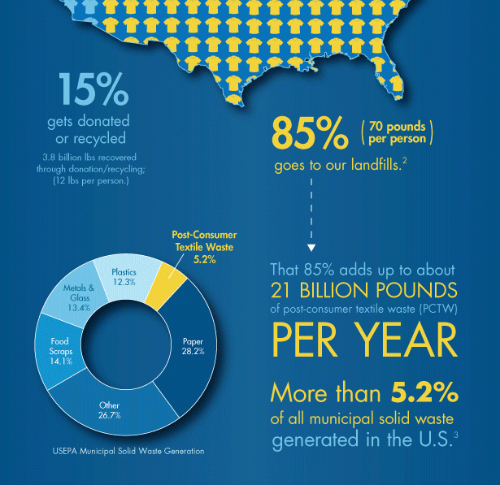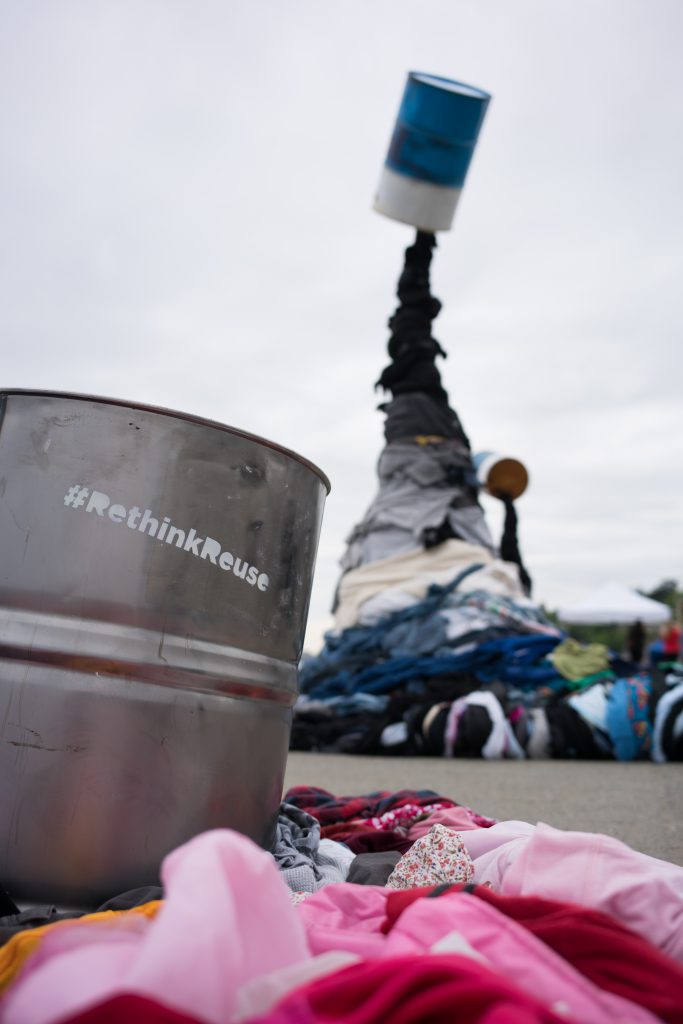
Landfills Shouldn’t be Laundry Piles: We Are Tossing WAY Too Much Clothing

During the late 90’s and early 2000’s, the blindingly sunny and windy South Floridian city which I lived caught the nationwide recycling bug. Every day, after gardening class (where I tended to my peanut plant!), I’d come home with facts about recycling, nature, and how with effort and hard work we were going to patch the ozone layer.
My parents, busy with figuring the work-life balance of a seven-person household, tried their best to accommodate my enthusiasm. Immigrants themselves, they knew a thing or two about reusing and recycling. Yet, it never occurred to any of us the impact of recycling our clothes. My mother brought pretty much everything secondhand, mostly out of the love of a bargain and the need to keep a watchful eye on the family budget—while keeping our outfits fabulous.

It was only a couple of years ago, during my journey into ethical business and fashion that I realized that textiles themselves should and could be recycled.
There are many people, like my former self, who haven’t even considered the impact of textile waste. And, unfortunately, out of the 25 Billion pounds of textile waste that Americans alone generate every year, only about 15% gets recycled or donated. So much more could be!
Most of the clothes that we wear—81 pounds per American citizen—end up in a landfill.
Out of that small portion of clothing that is donated, only about 10% of it ends up on the thrift store sales floor. The rest of it is passed onto textile recyclers, who can turn that clothing into rags, stuffing for pillows, and even recycled fiber to make other clothes.
On April 22, 2016—just in time for World Recycle Week and Fashion Revolution Week—Savers/Value Village, the used clothing chain with a purpose, unveiled an installation in Seattle, Rethink Reuse that highlights the collective impact of our used clothing on the environment. See video above and images above and below.

The installation addresses our need to buy clothes that last, clothes that are used, and to donate our used clothes in order to alleviate our landfills and the environment from the burden of our waste.
“We want to help people better understand the environmental impact of their clothing waste and the steps they can take to reduce it. That’s why we are calling on everyone to rethink reuse – shopping thrift, donating used items to a nonprofit and consuming goods in a more sustainable way,” says Ken Alterman, president and CEO of Savers.
This isn’t the first time that Savers/Value Village has motivated customers to change the way they approach their clothes. The company has helped keep almost 650 million pounds of reusable items out of landfills last year.
The #81PoundChallenge at the recent Vancouver EcoFashion week was another way in which the company worked to put the focus on the quality and usefulness of discarded clothing. Our editor, Starre Vartan, attended the event and you can see, above and below, some of the images from that night.
With your help, and their focus on reuse, we can keep more textile waste out of the landfill and out of the environment.
Want more ways to keep waste out of our landfills? Click here! And learn how you can recycle your shoes.




